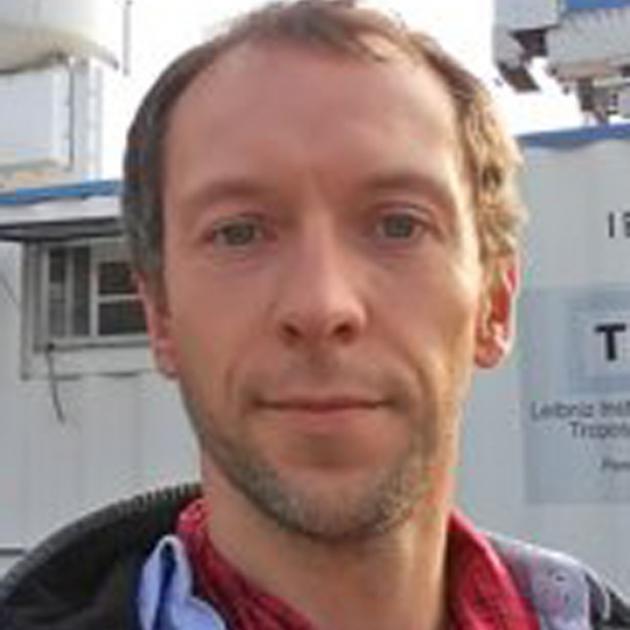Science
Researchers Launch Laser Project to Study Aerosols in New Zealand

A new atmospheric research project has commenced at the MetService site near Invercargill Airport, utilizing a laser beam to gather crucial data on how aerosols affect the atmosphere. The project, named goSouth-2, is a collaboration between institutions from Germany and New Zealand, including the Meteorological Institute of the University of Leipzig and the Leibniz Institute for Tropospheric Research (TROPOS).
Researchers from TROPOS are currently setting up equipment at the site, preparing for the project’s official launch on September 3, 2023. As part of the initiative, five staff members from TROPOS will be on the ground to facilitate the study.
Aerosols, which are tiny airborne particles, play a significant role in cloud formation by acting as nuclei for cloud particles. According to Dr. Patric Seifert from TROPOS, these particles can originate from various sources, including salt, dust, pollen, smoke, and volcanic activity. He emphasized the importance of understanding aerosol levels, stating, “The less aerosol particles are available, the less cloud particles can form, and vice-versa.”
Unique Research Environment
The southern tip of New Zealand, close to the northern edge of the Southern Ocean, offers a unique setting for this research. Dr. Seifert noted that the atmosphere can be exceptionally clean when air masses travel from the Antarctic, contrasting sharply with the more polluted air masses arriving from Australia. By studying the differences in aerosol content from these two sources, researchers aim to enhance their understanding of how clouds react to varying aerosol levels.
Current atmospheric and climate models have shown lower accuracy in simulating cloud behaviour over the Southern Ocean compared to the northern hemisphere. Dr. Seifert speculated that the disparity in aerosol concentrations between the hemispheres might account for this variation. He pointed out that there is significantly more data available for the northern hemisphere, which is generally more polluted.
The choice of Invercargill as the research location also stems from its logistical advantages, including support for operating the equipment and accommodating research staff. The MetService already conducts vital observations at the site, such as long-term weather balloon soundings, precipitation measurements, and solar and thermal radiation recordings.
Laser Technology and Future Plans
While all information-gathering instruments are land-based, residents near Invercargill Airport may notice a green laser beam in the sky. Dr. Seifert explained, “Our lidar [light detection and ranging] systems emit laser pulses to investigate the aerosols.” The beam is fixed in place, and airport staff have been notified about its presence. In addition to the lidar systems, researchers will employ radar technology to study clouds and precipitation.
The TROPOS team will remain on-site for a duration of 18 months, with a separate group of approximately 15 researchers in Germany tasked with analysing the collected data. This project follows the completion of goSouth-1, a month-long study conducted in Pahia, located 50 kilometers from Invercargill, in 2022. As researchers gather and analyze data from this new initiative, they hope to contribute valuable insights into the complex interactions between aerosols and clouds in the Southern Hemisphere.
-

 World4 months ago
World4 months agoTest Your Knowledge: Take the Herald’s Afternoon Quiz Today
-

 Sports4 months ago
Sports4 months agoPM Faces Backlash from Fans During Netball Trophy Ceremony
-

 Lifestyle4 months ago
Lifestyle4 months agoDunedin Designers Win Top Award at Hokonui Fashion Event
-

 Entertainment4 months ago
Entertainment4 months agoExperience the Excitement of ‘Chief of War’ in Oʻahu
-

 Sports4 months ago
Sports4 months agoLiam Lawson Launches New Era for Racing Bulls with Strong Start
-

 World5 months ago
World5 months agoCoalition Forms to Preserve Māori Wards in Hawke’s Bay
-

 Lifestyle4 months ago
Lifestyle4 months agoDisney Fan Reveals Dress Code Tips for Park Visitors
-

 Health4 months ago
Health4 months agoWalking Faster Offers Major Health Benefits for Older Adults
-

 Politics4 months ago
Politics4 months agoScots Rally with Humor and Music to Protest Trump’s Visit
-

 Top Stories5 months ago
Top Stories5 months agoUK and India Finalize Trade Deal to Boost Economic Ties
-

 Health2 months ago
Health2 months agoRadio Host Jay-Jay Feeney’s Partner Secures Visa to Stay in NZ
-

 World5 months ago
World5 months agoHuntly Begins Water Pipe Flushing to Resolve Brown Water Issue









